Imagine having a thriving garden and a tank full of happy fish working in harmony, right in your backyard.
Homestead aquaponics is the perfect blend of aquaculture (raising fish) and hydroponics (growing plants in water), creating a self-sustaining ecosystem.
It’s an innovative way to produce fresh vegetables and fish year-round, even with limited space like urban homesteading.
Whether you’re a seasoned gardener or just starting your homesteading journey, aquaponics can be a game-changer.
What is Backyard Aquaponics?
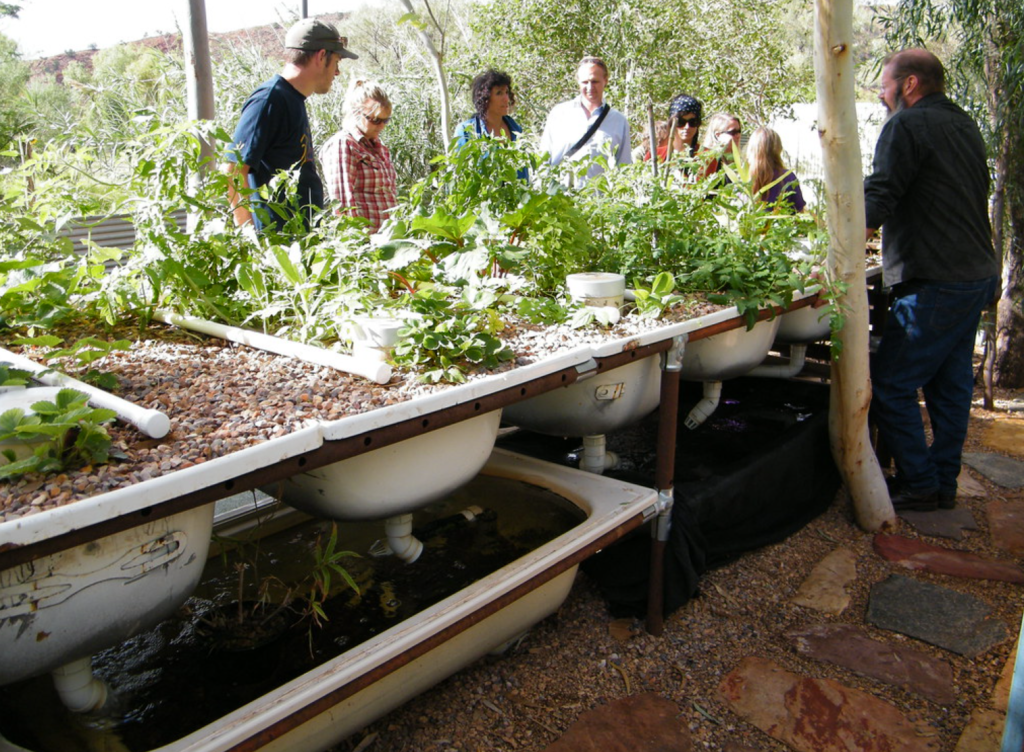
Aquaponics is a closed-loop system where fish and plants coexist symbiotically. Fish waste provides nutrients for plants, and in return, the plants help filter and clean the water for the fish.
This method mimics natural ecosystems, creating a balance that benefits both organisms.
Unlike traditional gardening, aquaponics uses up to 90% less water and requires minimal soil, making it a fantastic choice for sustainable living.
The Perfect Combo: Fish and Plants
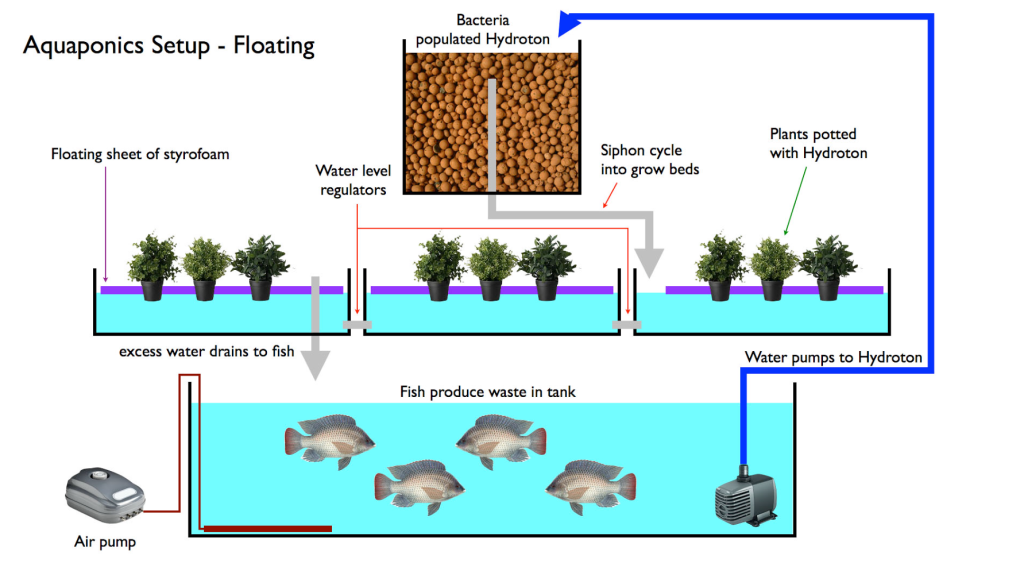
Think of aquaponics as nature’s ultimate tag team. Fish, such as tilapia or koi, release ammonia-rich waste.
This waste, harmful in high concentrations, is transformed by beneficial bacteria into nitrates, which are the perfect plant food.
Meanwhile, the plants absorb these nutrients, purifying the water for the fish. It’s a win-win!
Why Aquaponics is Ideal for Homesteaders
Homestead aquaponics is the epitome of efficiency. It’s space-saving, water-conserving, and provides a year-round harvest.
For homesteaders, this means fresh veggies and fish without the need for chemical fertilizers or pesticides, which adheres perfectly to the principles of permaculture gardening.
As seen below, it also can be done fully off-grid for those who already have incorporated self-sufficient energy ideas into their homestead.
Ultimately, aquaponics is a great way to cut grocery costs by growing organic fresh produce and fish at home, helping you move toward true self-reliance and economic freedom. You can reduce expenses AND help to conserve resources for your entire community.
Aquaponics is also a great addition to the 10 backyard business ideas that I recommended in my previous article!
There’s nothing like harvesting fresh veggies and watching your fish thrive. It’s rewarding and brings a sense of accomplishment.
How Aquaponics Works: The Science Behind It
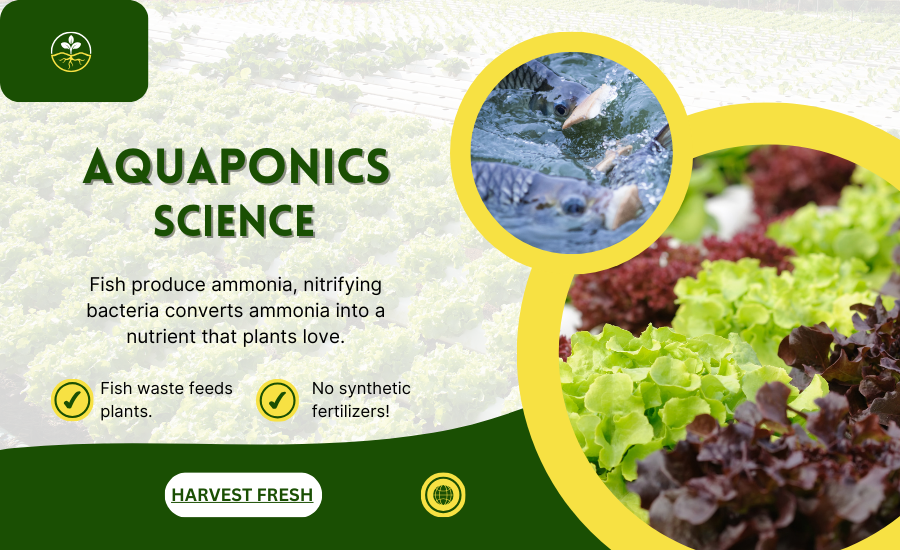
Understanding the science behind aquaponics empowers you to create an ideally balanced ecosystem for long-term productivity. Most importantly, it ensures optimal fish and plant health, maximizes yields, reduces waste, and helps troubleshoot issues effectively for sustained success in food production. Here are the keys…
Understanding the Nitrogen Cycle
The nitrogen cycle is the backbone of aquaponics. Fish produce ammonia, which is toxic in large amounts. However, nitrifying bacteria convert ammonia into nitrites and then into nitrates, a nutrient that plants love. This process not only feeds your plants but also keeps your fish safe from toxic ammonia buildup.
How Fish Waste Feeds Plants
Fish waste might seem like a problem, but in aquaponics, it’s a resource. The waste is broken down by bacteria into nutrient-rich water, creating a natural fertilizer that plants thrive on. This eliminates the need for synthetic fertilizers and reduces waste, making your system both productive and eco-friendly.
Balancing the Ecosystem: Keeping Fish and Plants Happy
The key to a successful aquaponics system is balance. Too many fish can overwhelm the plants, while too few fish won’t provide enough nutrients. Maintaining the right ratio of fish to plants, and monitoring water quality regularly, ensures a healthy, flourishing system.
Setting Up Your Backyard Aquaponics System
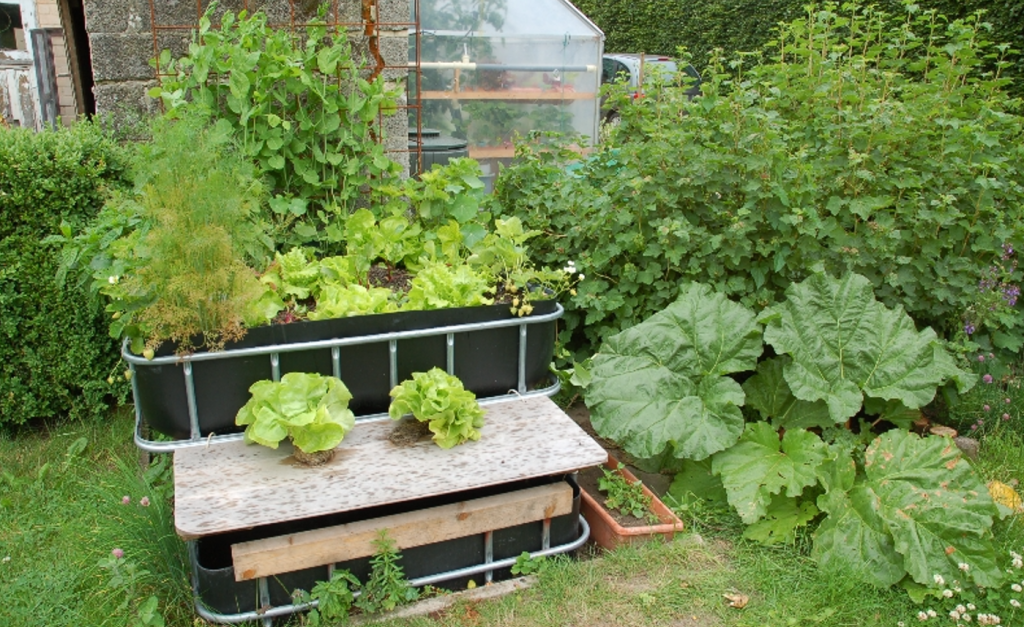
Creating your own aquaponics system can be as easy or as complex as you choose. For beginners, aquaponics can begin producing results surprisingly quick and can lead to becoming overwhelmed. The key is always in the planning — start small before working your way toward more elaborate systems.
Aquaponics systems typically take 4 to 6 weeks to start producing, depending on several factors. Here’s a breakdown:
- System Cycling: Initial setup involves cycling the system to establish beneficial bacteria, which convert fish waste into plant nutrients. This process usually takes 4-6 weeks.
- Plant Growth: Once cycling is complete, leafy greens like lettuce can start producing within 3-4 weeks. Fruiting plants like tomatoes may take longer, depending on their natural growth cycles.
- Fish Growth: Fish growth varies by species. Tilapia, a common choice, can reach harvest size in 6-9 months.
Proper monitoring and system balance are key for quicker production and better yields.
Choosing the Right Location: Indoors or Outdoors?
A backyard aquaponics system can thrive in various locations: patios, greenhouses, or under pergolas for controlled sunlight. Shady corners with supplemental lighting work well, too.
Balconies or rooftops suit urban setups. Ensure proximity to water and power sources, and select spots protected from harsh weather for optimal efficiency and plant growth.
Essential Components: Fish Tank, Grow Bed, and Pumps
Your aquaponics system needs three basic components: a fish tank, a grow bed containing pots for the plants, and a pump to circulate the water.
The fish tank holds the fish, the grow bed houses the plants, and the pump keeps everything moving. A well-designed system also includes biofilter media to foster beneficial bacteria.
DIY vs. Pre-Made Kits: What’s Best for You?
Building your own aquaponics setup can be a fun DIY project and allows for customization. Here is a detailed guide to make it as easy as possible to get started growing organic aquatic vegetables.
However, pre-made kits are great for beginners who want a simple, ready-to-go option.
Consider your skill level, budget, and time commitment when deciding which route to take!
Choosing Fish for Your Aquaponics System
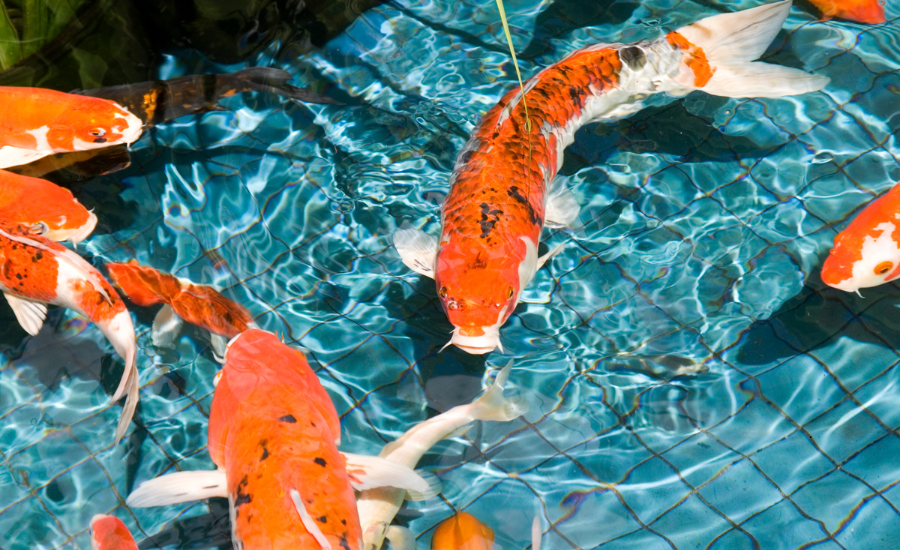
Choosing the right fish is crucial for aquaponics success. Fish determine water quality, nutrient availability, and system stability.
Factors like climate, growth rate, and compatibility with plants directly impact efficiency, sustainability, and overall productivity. Here is what you need to identify as you begin your journey…
Best Fish Choices for Backyard Aquaponics
Tilapia, trout, and koi are popular choices for beginner aquaponics. Striped bass, yellow perch, and catfish for intermediate and advanced systems.
- Tilapia are hardy and grow quickly, making them ideal for beginners.
- Koi are beautiful and can thrive in colder climates.
- Trout, though more temperature-sensitive, provide a tasty and nutritious option.
- Striped bass are hardy, fast-growing, adaptable to tank environments and a great food fish. However, they have high oxygen needs, are sensitive to temperature, and require larger tanks.
- Yellow perch are tasty, hardy, grow quickly, and tolerate the cold, but they are prone to overcrowding and are slower breeding in colder months.
- Catfish tolerate high stocking densities and adapt to various conditions, but they require warm water and are quite sensitive to poor oxygen levels.
There are several other possible choices shown in the video below.
How to Care for Your Aquaponic Fish
Keep your fish happy with clean water, a balanced diet, and proper aeration. Monitor water temperature and pH levels regularly to ensure a healthy environment. Feeding your fish high-quality, nutrient-rich food will also enhance the growth of your plants.
Common Fish Health Issues and How to Avoid Them
Fish can be prone to stress, disease, and oxygen deficiencies. Avoid overfeeding, as uneaten food can decompose and harm water quality. Regular water testing and tank maintenance will help you catch potential issues early.
Plants that Thrive in Aquaponics
Choosing the right plants ensures your aquaponics system thrives. Plants must match the water conditions and nutrient levels provided by fish.
Selecting compatible species boosts growth, balances the ecosystem, and maximizes harvest success and sustainability. Here are the main areas to consider when designing your aquaponics system.
Top Plants to Grow for High Yield
Leafy greens like lettuce, spinach, and kale thrive in aquaponics. Herbs such as basil, mint, and cilantro also do well, as they don’t require a lot of nutrients.
For a bit more challenge, try growing tomatoes, cucumbers, or peppers. The video below is a great overview of the possibilities as you expand your system.
Tips for Maximizing Plant Growth
Space your plants properly to allow for good airflow and sunlight. Rotate crops to prevent nutrient depletion and use companion planting to naturally deter pests. Prune regularly to encourage new growth and prevent overcrowding.
Common Plant Problems and Solutions
If your plants show yellow leaves, they might be lacking in nutrients. Check water quality and adjust feeding levels. Algae buildup can compete with your plants for nutrients; reduce direct sunlight on the water surface to prevent it.
Maintaining Your Aquaponics System
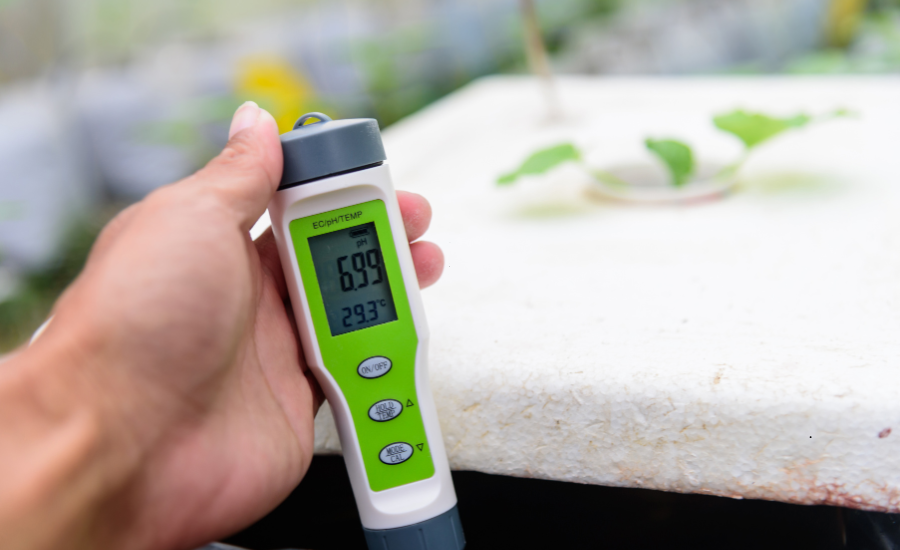
Let’s be honest: maintenance is never exciting, but with aquaponics it is the most essential component of your entire setup, and can be the trickiest.
Proper maintenance of your aquaponics system ensures healthy fish, thriving plants, and balanced water chemistry. Regular care prevents disease, boosts yields, and sustains the delicate ecosystem.
Here is how to think long-term and get started with a solid aquaponics maintenance routine that will pay dividends for years to come.
Water Quality: How to Test and Maintain It
Regular water testing is crucial for a healthy system.
Test for pH, ammonia, nitrites, and nitrates. The ideal pH range for most aquaponic systems is between 6.8 and 7.2. Use natural buffers like crushed limestone to adjust pH levels.
Feeding Your Fish: The Do’s and Don’ts
Feed your fish high-quality food, but don’t overfeed. Excess food can pollute the water and harm both fish and plants. Feed smaller portions and observe how quickly the fish consume it to find the right amount.
Seasonal Adjustments for Year-Round Success
Adjust your system for temperature changes, especially if it’s outdoors. Use heaters or insulation during colder months and shade during hot weather. Choosing season-appropriate plants can also help your system thrive year-round.
Troubleshooting Common Aquaponics Issues
Identifying and troubleshooting problems in your aquaponics system is an essential skill that can avoid cascading failures. Since aquaponics is a interconnected system, it’s very dependent upon all systems working synergistically.
Early detection and resolution will protect your investment — vigilance keeps your system thriving! Here is a great video showing 5 common mistakes that lead to problems and how to avoid and correct them.
Final Tips for Aquaponics Success
Aquaponics offers a unique and rewarding way to grow your own food, blending sustainability with innovation.
Whether you’re a beginner exploring eco-friendly gardening or an expert seeking new challenges, this system adapts to every skill level.
Look for online forums, books, and local workshops to expand your knowledge. A great education resource for all things aquaculture and aquaponics — including supplies, events and even jobs — is the Aquatic Network.
With dedication and curiosity, you’ll cultivate not just a garden, but a deeper connection to nature and self-sufficiency. Remember: the journey is as rewarding as the harvest. Dive in and make your aquaponics dream a reality!
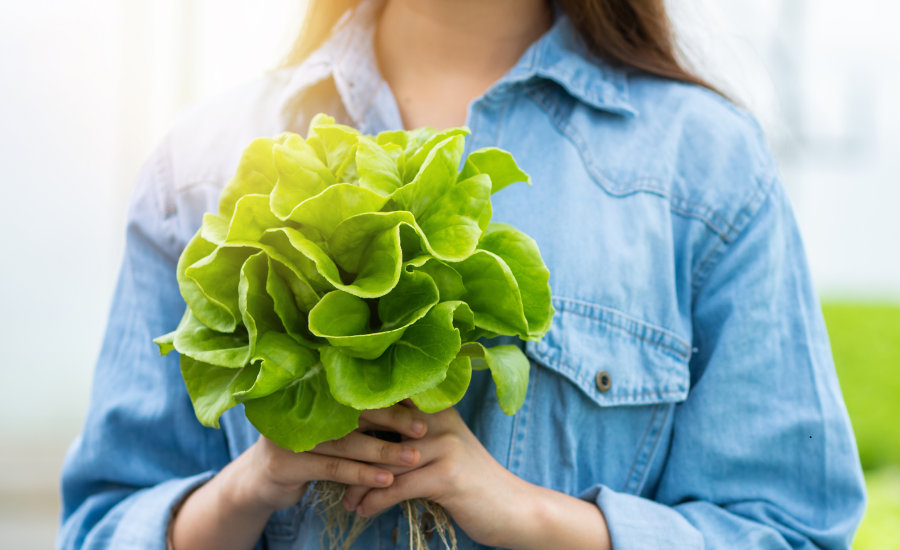
Main image credit: No1 IDEAS/YouTube
See Our Latest Posts
- Simple Recipes for DIY Herbal Salves and Balms
- Delicious One-Pot Homestead Meals from Pantry Staples
- 5 Best Meat Dehydrators for DIY Jerky on Amazon (2025)
- Urban Homestead Hacks from Backyard to Balcony
- Creative Strategies for Frugal Homesteading
Write A Guest Post For Us!
Are you passionate about gardening, raising livestock or preserving food? We’re excited to announce that we’re now accepting guest posts for all aspects of homesteading!

